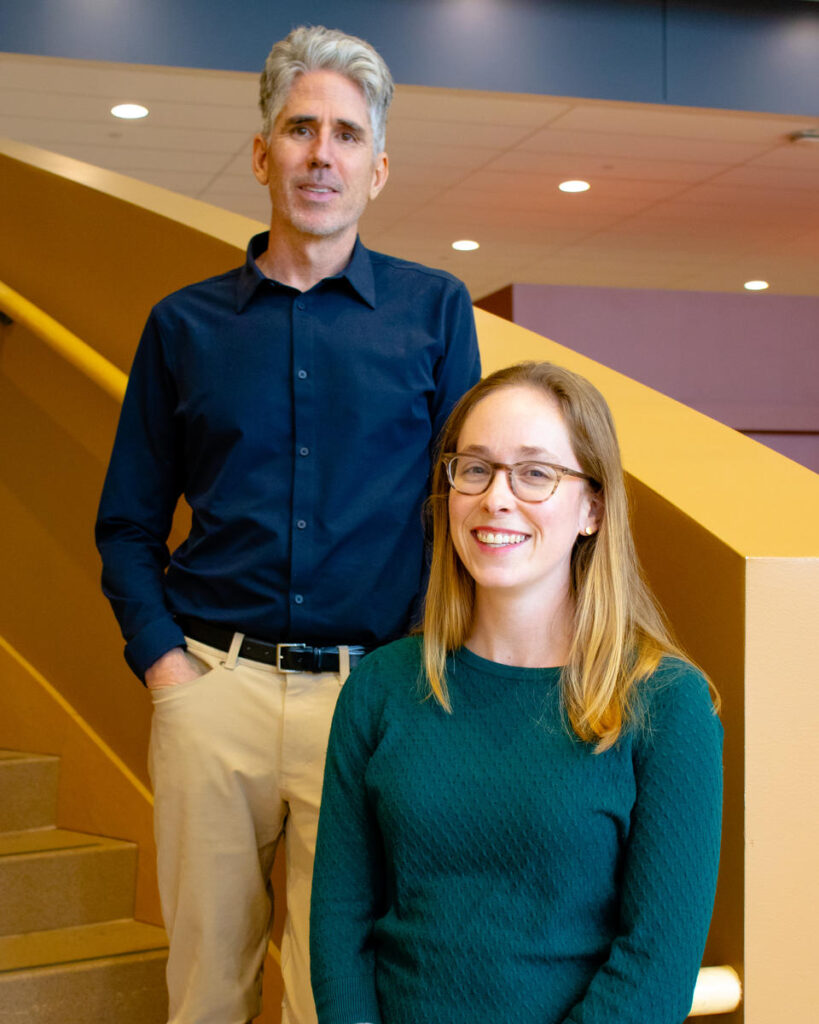Rabinowitz: Cancerous Tumors are Sluggardly
Scientists have never known precisely how much energy a cancerous tumor expends growing in the mammalian body.
They hypothesized that it consumes a great deal of energy, churning through nutrients and putting healthy tissue – the heart, the liver, the pancreas – at a disadvantage as the metabolic system spreads the nutritive wealth.
But a new study from researchers at Princeton Chemistry and the Ludwig Princeton Branch demonstrates for the first time that the opposite is actually true: a tumor’s conversion of nutrients to usable cellular energy is markedly, quantifiably sluggish.
This lethargy may help tumors conserve energy for more nefarious tasks like growth and metastasis, according to research from the Rabinowitz Lab appearing this week in Nature.
In five different types of cancers, researchers found that tumors were successful at proliferating on low-energy budgets in part because they neglect normal tissue functions that healthy organs carry out for the benefit of the body as a whole.

Joshua Rabinowitz, director of the Ludwig Princeton Branch, professor of chemistry and the Lewis-Sigler Institute for Integrative Genomics; and Caroline Bartman, a postdoc in the Rabinowitz Lab and lead author on the research.
The discovery has vast implications for anti-cancer strategies because it directs our attention to slow energy metabolism.
Some proposed treatments for cancer revolve around a “starve the tumor” strategy, under the assumption that without nutrients a tumor cannot flourish. From the general perspective of energy substrates, at best, this strategy is now questionable.
But the study did find that tumors use one particular nutrient, glucose, more than normal tissues, and thus aligns with the possibility of combining standard cancer therapies with diets that reduce circulating glucose, like the ketogenic diet.
“I think people assume that cancer does need a lot of energy because it has to pay to divide and proliferate. But no one had actually measured how much energy cancer makes and uses compared to your healthy organs,” said Caroline Bartman, a postdoc in the Rabinowitz Lab and lead author on the research.
“We developed a way to measure it in cancers and found a dramatic difference between tumors and other tissues. So now, we have this paradigm that cancer is thrifty – it’ll stop using energy for all these healthy tasks and just devote it to proliferation. What that tells you is that those types of avenues, like starving the cancer, alone are not going to be good strategies for treatment.”
Joshua Rabinowitz, director of the Ludwig Princeton Branch, professor of chemistry and the Lewis-Sigler Institute for Integrative Genomics, said researchers were very surprised at the results of their research.
“It’s one of those things that you can rationalize when you look at in retrospect,” he said. “The tumors are facing a harsh metabolic environment because they don’t have the proper vasculature that develops in the rest of the body. And so they are forced to make do with less.
“But certainly, because tumors are hypermetabolic on so many dimensions, we expected that we would see high-energy metabolism and that this would support their ability to grow and differentiate.
“I guess the big message is that growth is expensive,” Rabinowitz added, “but not as expensive as having thoughts or moving muscles or other aspects of mammalian life that normal organs carry out.”
ISOTOPE TRACING QUANTIFIES ENERGY USE
To quantify their research, the team used a method of investigation called isotope tracing, which involves labeling nutrients with heavy isotopes and tracking how quickly they are metabolized in mammals.
Tissue and organs in mammals derive energy for the work they do mainly through the tricarboxylic acid (TCA) cycle, which oxidizes fat and carbohydrates to make the primary energy currency, ATP. Some 95% of ATP or usable energy in mammals comes through this cycle. By studying the speed of the uptake of nutrients from the bloodstream into the TCA cycle, researchers were able to quantify just how much energy cancerous tissues are generating and using compared to healthy tissue.
In lung, pancreatic, and colon cancers, for example, they found a slow TCA flux and ATP production cycle in “primary” solid tumors, i.e. tumors that had not yet begun spreading.
They also found that metastatic cancer made and used more energy than primary tumors and did so on a level comparable with healthy tissues.
The findings led researchers to conclude that cancer cells shed energetically expensive tissue-specific functions to reserve energy for tumor growth. They also found that metastatic cancer made and used more energy than primary tumors, on a level comparable to some healthy tissues.
This is the first-time tumor energy production has been quantified in vivo and as part of a comparative study.
Some of the methods researchers are using now have been tapped before, said Bartman. The pathway of the TCA cycle, for example, was discovered some 80 years ago. But technological advances and better spectrometry are providing startling new findings.
“I think it’s an exciting time for this field,” said Bartman, “because, with the advances of the past 50 years, it’s a really fruitful time to go back and revisit all these old concepts and use them to better understand disease and cancer now.”
“Slow TCA flux and ATP production in primary solid tumours but not metastases,” was published in Nature on Feb. 1, 2023.
The authors acknowledge funding support from the NIH; Ludwig Cancer Research; Stand Up to Cancer; the American Cancer Society; the Leukemia and Lymphoma Society Scholar Award; the Allen Foundation; the Damon Runyon Foundation/Mark Foundation Postdoctoral Fellowship; the New Jersey Commission on Cancer Research; the Charles H. Revson Senior Fellowship in Biomedical Science; and the New Jersey Commission on Cancer Research.
